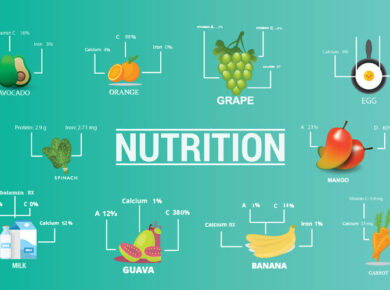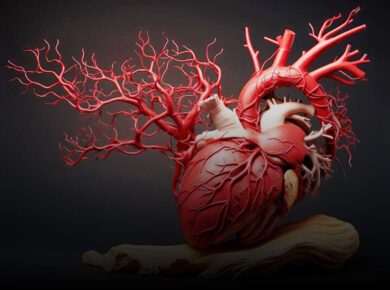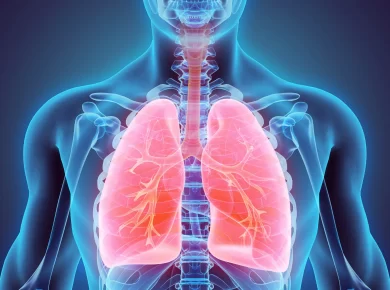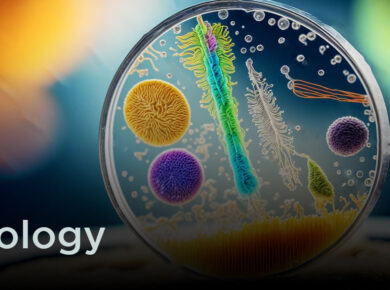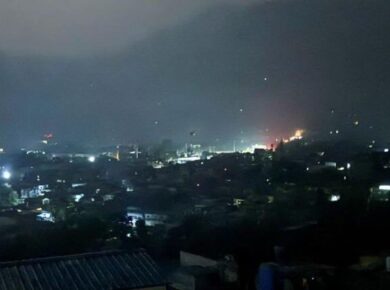Cell Wall
In bacteria and plant cells the outermost cell cover, present outside the plasma membrane is the cell wall about which we shall study now.
Bacterial cell wall is made of Peptidoglycan.
(a) Structure
- Outermost nonliving, layer present in all plant cells.
- Secreted by the cell itself.
- in plant, made of cellulose but may also contain other chemical substance such as pectin and lignin.
- The substance constituting the cell is not simply homogenous but it consists of fine threads or fibres called microfibrils.
- It may be thin (1 micron) and transparent as in the cells of onion peel. In some cases it is very thick as in the cells of wool.
(b) Functions
- The cell wall protects the delicate inner parts of the cell.
- Being rigid, it gives shape to the cell
- Being rigid, it does not allow distension of the cell, thus leading to turgidity of the cell that is useful in many ways
- It freely allows the passage of water and other chemicals into and out of the cell
- There are breaks in the primary wall of the adjacent cells through which cytoplasm of one cell remains connected with the other. These cytoplasmic strands which connect one cell to the other one are known as plasmodesmata,
- Walls of two adjacent cells are firmly joined by a cementing material called Middle Lamella made of Calcium Pectate.
The Cytoplasm and the Cell Organelles
The cytoplasm contains many cell organelles of which we shall lean about
- those that trap and release energy e.g., mitochondria and chloroplasts:
- Those that are secretory or involved in synthesis and transport e.g., Golgi, ribosomes and Endoplasmic reticulum
- the organelles for motility-cilia and flagella
- the suicidal bags i.e., lysosomes
- the nucleus which controls all activities of the cell and carries the hereditary material.
Mitochondria and Chloroplast – The Energy Transformers
Mitochondria (found in plant and animal cells) are the energy releasers and the chloroplasts (found only in green plants cells) are the energy trappers.
Mitochondria (Singular Mitochondrion)
Appear as tiny thread like structure under light microscope. Approximately 0.5 – 1.00 (micrometer)
Number usually a few hundred to a few thousand per cell (smallest number is just one as in an alga Micromonas)
Structure: The general plan of the internal structure of a mitochondria observed by means of electron microscope. Note the following parts.
- Wall made of double membrane
- the inner membrane is folded inside to form projections called cristae which project into the inner compartment called matrix.
Function: Oxidises pyruvic acid (breakdown product of glucose) to release energy which gets stored in the from of ATP for ready use. This Process is also called Cellular Respiration. A highly simplified flow-chart of the fate of glucose to in the release energy is shown below Plastids.
Plastids are found only in a plant cell. They may be colourless or with colour. Based on this fact, there are three types of Plastids.
(i) Leucoplast – White or Colourless
(ii) Chromoplast – Blue, Red, Yellow etc.
(iii) Chloroplast – Green
Chloroplast
- Found in all green plant cells in the cytoplasm.
- Number 1 to 1008
- Shape: Usually disc-shaped or spherical as in most plants around you. In some ribbon – shaped as in an alga spirogyra or cup – shaped as in another alga Chlamydomonas.
- Structure: the general plan of the structure of a single chloroplast is shown in. Note the following parts
- Wall made of double membrane i.e., numerous stack-like (piles) groups interconnected by lamellae.
- Sac like structures called thylakoids placed one above the other constitute outer membrane and inner membrane or grana (singular granum).
- Inside of the chloroplast is filled with a fluid medium called stoma.
- Function: Chloroplasts are the seat of photosynthesis (production of sugar, from carbon dioxide and water in the presence of sunlight).
Chloroplast versus and Mitochondria
Can you now visualize how these two organelles are opposite to each other, one traps the solar energy locking it is a complex molecule (by Photosynthesis), the other releases the energy by breaking the complex molecule (by respiration).
Similarities between Mitochondria and Chloroplasts: both contain their own DNA (the genetic material) as well as their own RNA (for protein synthesis). Thus, they can self-duplicate to produce more of their own kind without the help nucleus. Since chloroplasts and Mitochondria contain their own DNA the hereditary molecule and also their own ribosomes, they are termed semi-autonomous only because they are incapable of independent existence though they have ribosomes and DNA.
Endoplasmic reticulum (ER), Golgi body and ribosomes Endoplasmic reticulum (ER) and Golgi body are single membrane bound structures (lipid-protein) as the plasma membrane, but ribosomes do not have membranes Ribosomes are involved in synthesis of substances in the cell, Golgi bodies in secreting and the ER in transporting and storing the product. These three organelles operate together.
A network of membranes with thickness between 50 – 60A. It is of two types – rough endoplasmic reticulum (RER) i.e., when ribosomes are attached to it and Smooth-endo-Plasmic reticulum (SER) when no ribosomes are present. Throughout the cytoplasm and is in contact with the cell membrane as well as the nuclear membrane.
Function
Provides internal framework, compartment and reaction surfaces, transports enzymes and other materials throughout the cell. RER is the site for protein synthesis and SER for steroid synthesis, stores carbohydrates.
- Is a stack of membranous sacs of the same thickness as ER.
- Exhibit great diversity in size and shape.
In animal cells present around the nucleus, 3 to 7 in number. In plant cells, many and present scattered throughout the cell called dictyosomes.
Synthesis and secretion as enzymes, participates in transformation of membranes to give rise to other membrane structure, and dictyosomes, synthesize wall element like pectin, mucilage.
Spherical about 150 – 250 A in diameter, made up of large molecules of RNA and proteins (ribonucleo proteins)
Present either as free particles in cytoplasm or attached to ER. Also found stored in nucleolus inside the nucleus. 80S types found in eukaryotes and 70S in prokaryotes (S Function Svedberg unit of Measuring ribosomes). Site for protein synthesis.
The Microbodies (tiny but important)
These are small sac-like structures bounded by their membranes. These are of different kinds of which we will take up three like Lysosomes, Peroxisomes and Glyoxysomes.
Lysosomes (lysis = breaking down, soma= body)
Lysosomes are present in almost all animal cells and some not – green plant cells. They perform intracellular digestion.
Some main features of Lysosomes are as follows:
- Membranous sacs budded off from Golgi body.
- May be in hundreds in single cell.
- Contain several enzymes (about 40 in number)
- Materials to be acted upon by enzymes enter the lysosomes.
- Lysosomes are called “suicidal bags” as enzymes contained in them can digest the cell’s own material when damaged or dead.
Importance of intracellular digestion by the lysosomes
(i) help in nutrition of the cell by digesting food, as they are rich in various enzymes which enable them to digest almost all major chemical constituents of the living cell.
(ii) Help in defence by digesting germs, as in white blood cells.
(iii) Help in cleaning up the cell by digesting damaged material of the cell.
(iv) provide energy during cell starvation by digestion of the cells own parts (autophagic, auto self: Phagos: eat up).
(v) Help sperm cells in entering the egg by breaking through (digesting) the egg membrane.
(vi) In plant cells, mature xylem cells lose all cellular contents by lysosome activity.
(vii) When cells are old, diseased or injured, lysosomes attack their cell organelles and digest them.
In other words lysosomes are autophagic, i.e. self devouring.
PEROXISOMES
Found both in plant and animal cells, Found in the green leaves of higher plants. They participate in oxidation of substrates resulting in the formation of hydrogen peroxide.
- They often contain a central core of crystalline material called nucleoid composed of urate oxidase crystals.
- These bodies are mostly spherical or avoid and about the size of mitochondria and lysosomes.
- They are usually closely associate with E.R.
- They are involved in with photorespiration in plant cells.
- They bring about fat metabolism in cells.
3. Glyoxysomes
- The microbodies present in plant cells and morphologically similar to peroxisomes.
- Found in the cell of yeast and certain fungi and oil rich seeds in plants
- Functionally they contain enzyme of fatty acid metabolism involved in the conversion of lipids to carbohydrates during germination.
Cilia and flagella (the organelles for mobility)
- Some unicellular organisms like Paramecium and Euglena swim in water with the help of cilia and flagella respectively.
- In multicellular organism some living tissues (epithelial tissues) have cilia. They beat and create a current in the fluid in order to move in a given direction e.g. in the wind pipe (trachea) to push out the mucus and dust particles.
- Cilia beat like tiny oars or pedals (as in a boat) and flagella bring about whip – like lashing movement.
- Both are made up of contractile protein tubulin in the form of microtubules.
- The arrangement of the microtubules in termed 9 + 2, that is two central microtubules and nine set surrounding them.
Cilia
Shorter (5 to 10tm) several 100 per cell structure protoplasmic projection and membrane bound consist of 9 sets of peripheral microtubules and 1 set of tubules in the centre.
Flagella
- longer (15 tm)
- Usually 1 or 2 in most cells same as in cilia
Centriole
It is present in all animal cells (but not in Amoeba), located just outside the nucleus. It is cylindrical, 0.5 tm in length and without a membrane. It has 9 sets of peripheral tubules but none in the centre.
Each set has three tubules arranged at definite angles. It has its own DNA and RNA and therefore it is self duplicating.
Function: Centrioles are involved in cell division. They give orientation to the ‘mitotic spindle’ which forms during cell division.
Basal Bodies
These are structures similar to centrioles. They have the same nine sets of triplet organization as in the centrioles. The cilia and flagella appear to arise from the basal bodies.


